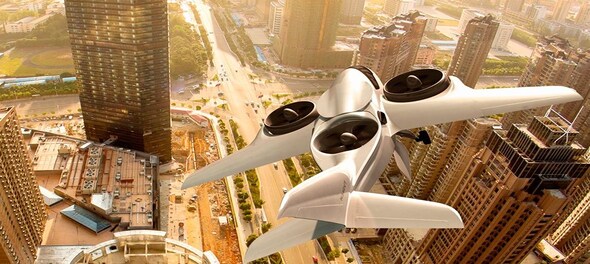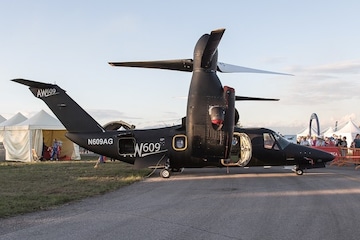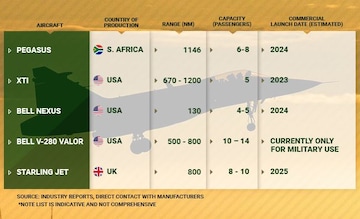
With rapid urbanisation and the projection of close to two-thirds of the world’s population living in cities by 2050, congestion and productivity loss — both on the ground and in the air — are huge challenges. For India this is exacerbated.
The country will see the highest increase in urban population. By 2050, India will add more people to its cities than the number currently residing in them. And this is already being witnessed in cities such as Delhi, Mumbai and Bengaluru, which have grown rapidly.
Unfortunately, the expansion of these cities has not been met with a concurrent expansion of transport infrastructure. The result: extensive traffic delays and productivity loss (both time and money). Congestion is reaching a point of contagion.
This issue is being exploited by firms leveraging vertical takeoff and landing technology (VTOL). The advent of VTOL is likely to redefine aviation as we know it.
The VTOL opportunity
VTOL technology enables aircraft to take off and land like a helicopter while cruising like airplanes. This enables access to otherwise constrained areas of the city besides saving time and money.
Overall, the business case for VTOL aircraft is predicated on saving time by bypassing airports. The fact that one of the biggest challenges facing general aviation is the lack of airport capacity only furthers this business case. In the case of India, there are very few secondary airports, which cements this further. VTOL is hoping to fill this gap. And the technology has the potential to disrupt an entire market via its extension to larger jets (though that may be years away).
The added advantage of VTOL machines is that they can also engage in conventional takeoffs and landings (CTOL). In fact, CTOL operations help extend the range as the power required to get off the ground and back on-to it is much lower. What this effectively does is open up the aircraft to hundreds of existing airfields thereby providing an extremely flexible transportation solution.
Design considerations for VTOL aircraft
Critical to VTOL capability is the weight of the aircraft. An aircraft that is too heavy requires a disproportionate amount of power to get off the ground. Consequently range and capacity are impacted. Similarly, if it is too light it is limited by the payload it can carry. And most importantly – the cost has to be feasible. Else the aircraft simply prices itself out of the market.
Interestingly, in keeping the weight of the machine low, developers used composites and new age material. This also led to the exploration of hybrid electric technology which now fits in perfectly with the focus towards green initiatives including reduction in carbon emissions and noise emissions. The VTOL aircraft will not only leave a much lower carbon footprint (if at all) but also be fairly quiet – which is again very beneficial to the entire ecosystem.
For engines, VTOL technology is using two basic designs. One is the tilt-rotor or a turboshaft while the other is the ducted fan. In the case of the tilt-rotor the aircraft takes off vertically using power from the rotors (similar to a helicopter). Subsequently the angle of attack is changed and the aircraft flies like an airplane. Upon landing the sequence is reversed.
The second technology is that of ducted fans which are similar to those used in drones. Ducted fans are also being used in conjunction with hybrid electric power thereby giving a fuel and weight advantage. However, the business viability including cost and feasibility of this technology remains to be demonstrated. Failing this, operators and investors will not commit significant capital.
Key players have prototypes in various stages of development
VTOL manufacturers are spread out across the globe. Considering various factors including funding, order book, range, capacity and capability, XTI aircraft of Denver is currently best positioned. Their prototype aircraft called the TriFan 600 successfully completed flight tests on May 2, 2019. The aircraft is a hybrid-electric design, and FAA certification is expected in 3-4 years with deliveries to commence by 2023. As a testament to its product, XTI has already taken in eighty orders worldwide, including from India. The aircraft’s versatility and cost of operation make for a very disruptive force in business aviation.
 The AugustaWestland609.
The AugustaWestland609.Other ventures in the segment include South Africa-based Pegasus Universal Aerospace. Their prototype was showcased earlier this year at the European Business Aviation Convention and Exhibition (EBACE) in Geneva. The aim is to start its order book for the eight-passenger type and further its funding.
The Bell Nexus debuted at the Las Vegas Consumer Electronics Show (CES) and more recently at the UberElevate summit. Looking at the range thought, this aircraft is targeting short commuter flights (intra-city only) thus focusing purely on urban-mobility. Bell’s other product, the Bell V-280 Valor is already flying and has been derived from existing aircraft technology (the AugustaWestland AW609) thus is ahead in the process. However, currently it is only authorised for military use. Starling Jet, a product of Samad Aerospace, was unveiled with much fanfare at the 2018 Paris Air show and has racked at that time had seventy five orders. Since then they have advanced on the design aspects and are working towards a prototype. Overall, the VTOL space is gaining momentum.

The regulatory dynamics are likely to present a hurdle
As the VTOL revolution takes hold, it will have to scale several hurdles towards commercial acceptance. First is the cost of the technology. The current prototypes use light-weight composites coupled with engine technology and scaling of the production while keeping costs sustainable will certainly be a challenge. Given the current challenges with the 737Max and the regulatory fall-out, the certification process will also be fairly tedious and expensive. Post FAA and EASA approval, the approval from regulators in Asia including India and China may also have challenges with technology patents. Overall, regulators will have to be convinced of the safety of these Jets. Other issues like security, setup, navigation and authorization will also come into play.
Indeed, one of the biggest challenges facing general aviation is the lack of airport capacity. With exorbitant airport charges coupled with the lack of access, business aviation suffers greatly. VTOL is hoping to fill this gap. But as this becomes commercially viable and accepted, existing airport operators are sure to put up a strong fight. Not because of business jets, rather because its extension to larger jets can be extremely disruptive to the airports’ business model. VTOL operators will have to be geared for a strong fight before flight.
Outlook
While several have dismissed VTOL as too futuristic, it is worth repeating that the United Nations estimates that by 2050 almost two thirds of the world’s population will live in urban areas. This trend has consequences that must be planned for starting today. Not doing so can result in significant wastage of human capital while causing a drain on resources. Consider this statistic: in 2017, the analytics firm Inrix, which provides location-based traffic data and analytics, estimated that lost productivity due to traffic delays caused $305 billion loss for the United States and a $110 billion dollar loss for Europe. If not addressed, this is likely to get worse. And this is exactly where the VTOL technology can make a positive difference -- by helping maximise ones' time, which is increasingly a scarce resource in the business world.
VTOL business aircraft may just be one of the most significant disruptions to hit the market in the years to come.
Satyendra Pandey is the former head of strategy at a fast growing airline. Previously, he was with the Centre for Aviation (CAPA) where he led the advisory and research teams. Satyendra has been involved in restructuring, scaling and turnarounds.
Check out our in-depth Market Coverage, Business News & get real-time Stock Market Updates on CNBC-TV18. Also, Watch our channels CNBC-TV18, CNBC Awaaz and CNBC Bajar Live on-the-go!


Lok Sabha elections 2024: Banks and schools to remain closed in these cities for phase 2 voting
Apr 25, 2024 5:33 PM
Andhra Pradesh Lok Sabha elections: Seats, schedule, NDA candidates and more
Apr 25, 2024 5:16 PM

